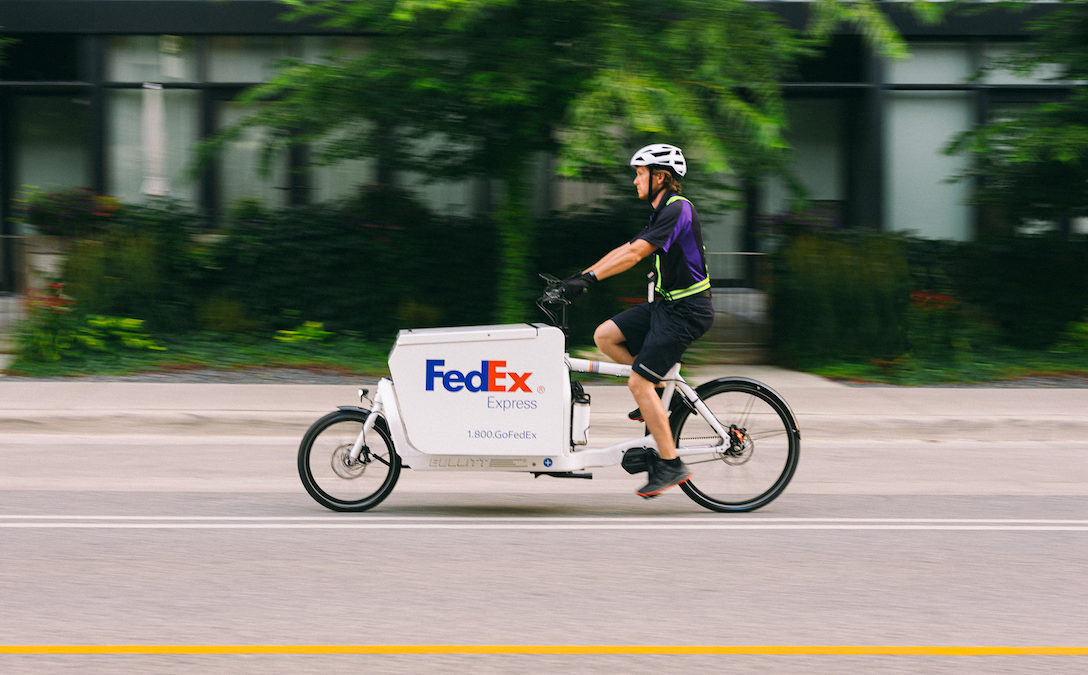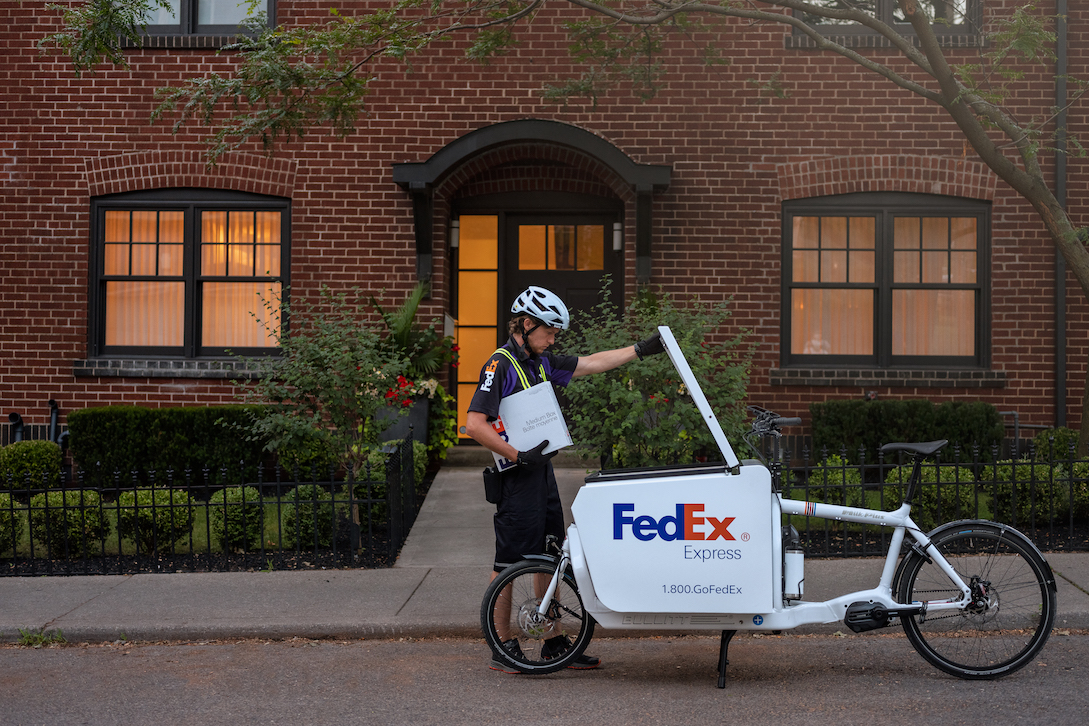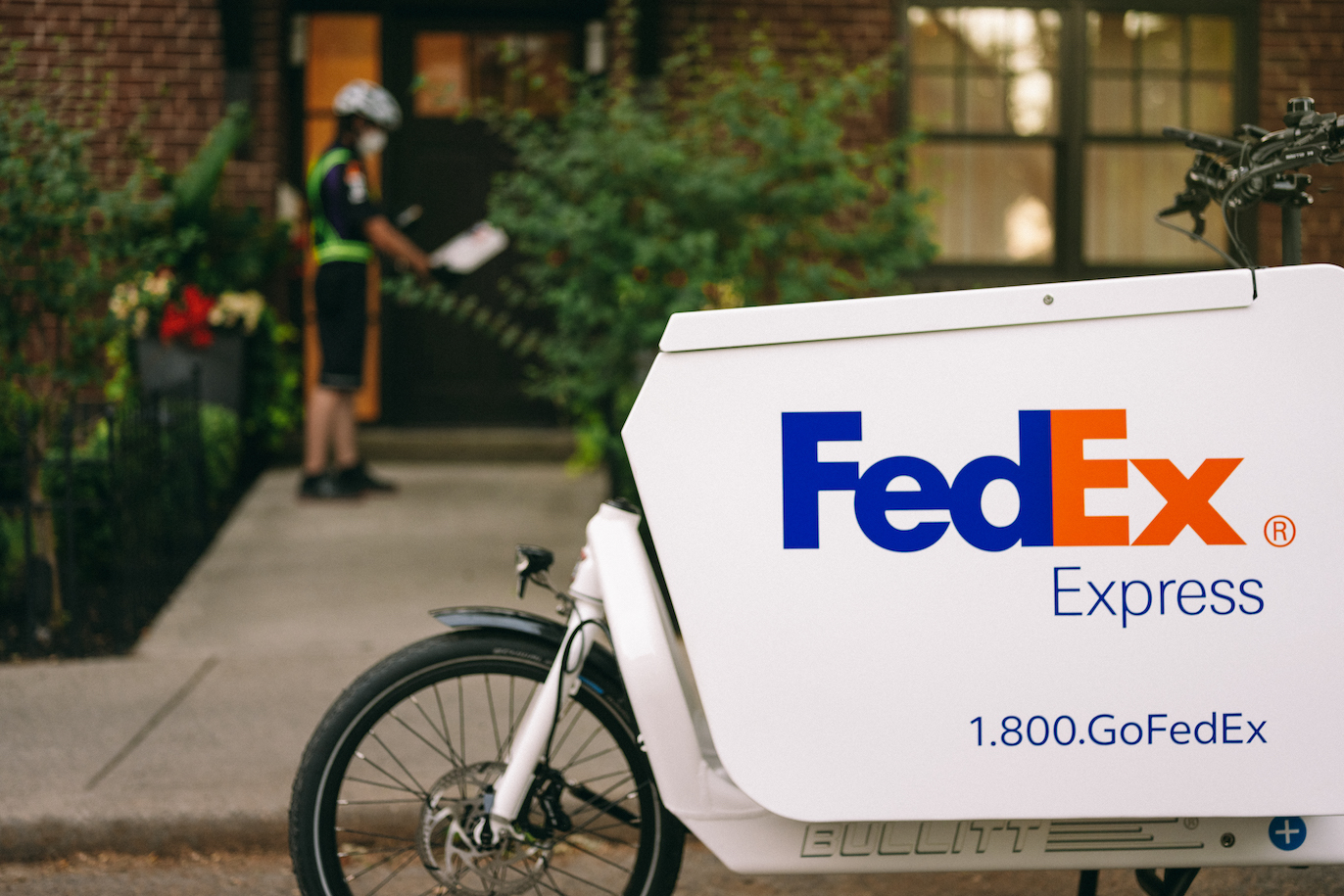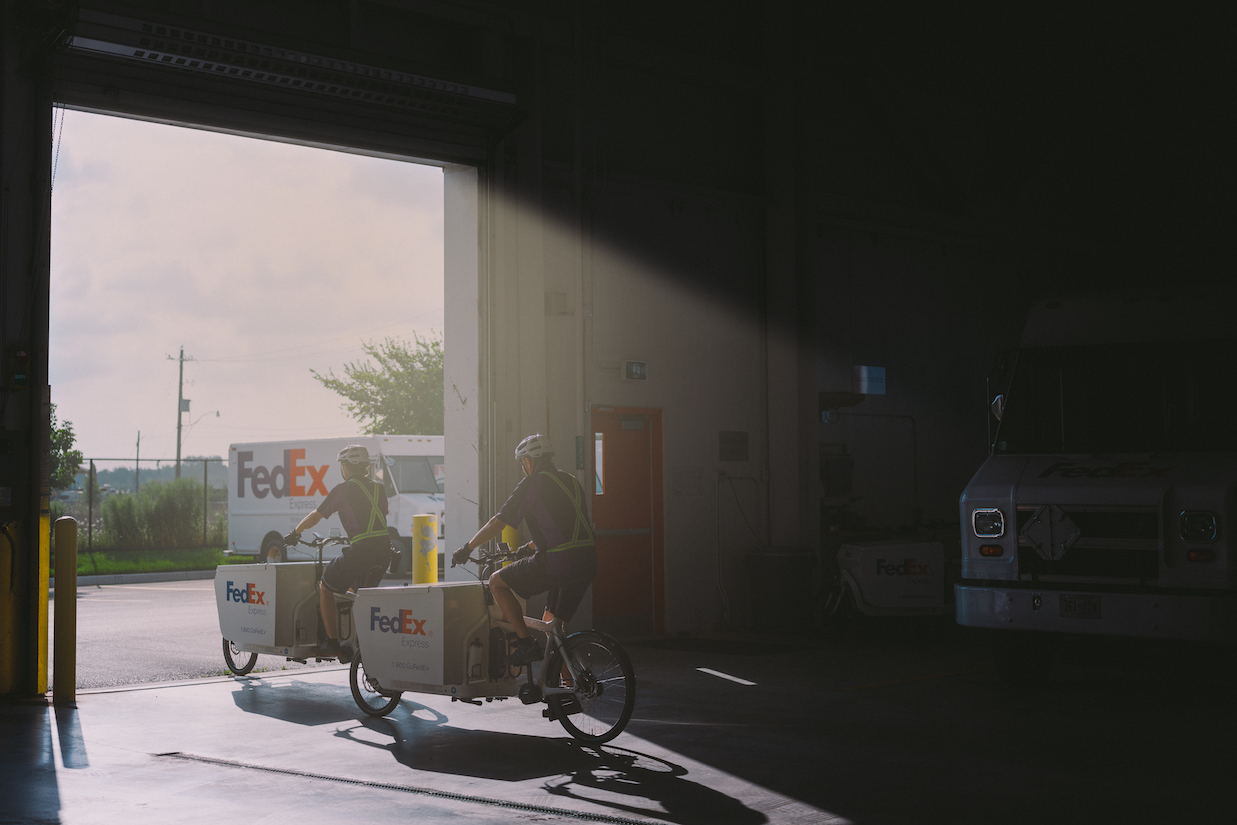Why FedEx chose a Canadian city to launch its unique ebike pilot project
Using cargo bikes as a sustainable delivery option
 Photo by:
Tishan Baldeo & Josh Sam
Photo by:
Tishan Baldeo & Josh Sam
This November has been unseasonably warm in Toronto, but Jeff Gilbert, a senior operations manager at FedEx, is already thinking about to how the company’s new ebikes will fare during the icier months.
“The bikes are at the shop right now getting winter tires on them,” he says, “and riders will be in proper gear. Toronto plows the bike lanes, so we’re really gonna try and push it to see how much they can get on the road this winter.”
Gilbert is heading a unique pilot in North America, designed to collect real-world data to better understand how alternate forms of clean transport can help reduce congestion in major cities and provide more efficient urban delivery and pickup solutions.
Launched this July, the project covers mostly residential areas for now, servicing Toronto neighbourhoods like the Beaches, the Danforth and Rosedale. “It’s been extremely successful,” says Gilbert, “We’ve had some great information come back in terms of productivity against vehicles.”
The bikes
Three of Bullitt’s Larry vs. Harry cargo ebikes make up the pilot project’s fleet. Manufactured in Copenhagen, the bikes comply with Toronto’s 35kg bike lane weight restrictions, which were in place when the project began. Weight restrictions have since been increased, but Gilbert says he’s currently happy with the Bullitt’s performance. “These bikes have a solid frame and they’re agile and nimble,” he says.
Built to ride through all seasons, the cargo bikes can get up to about 31km/h on a flat road. They feature internal gearing, hydraulic brakes, Shimano Di2, automatic electric shifting and can cover 180km on a single battery charge.

Why Toronto?
Gilbert says Toronto was perfect for this project for a number of reasons. The large urban population growth has sparked an increased demand for curbside delivery which, in turn, has led to increased curb delivery congestion. The gridlock traffic also isn’t helped by the constant construction in the city. “In a few years Toronto will be number two for skyscrapers in North America,” notes Gilbert. Currently, Toronto is officially the fastest growing metropolitan area in North America.
He also points out that Toronto has recently made efforts to expand its bike lane network, which now covers 627km of roads. “We’re the first city in North America to have FedEx cargo bikes,” says Gilbert. “This project has opened up conversations around the globe with other cities trying similar things, it’s really exciting.”

Environmental impact
From the beginning of the project, FedEx worked with the Pembina Institute, a Canadian non-profit think tank focused on energy which works to reduce the harmful impacts of fossil fuels. The ebike pilot aims to explore using sustainable means of reducing greenhouse gas emissions and urban congestion, and Gilbert says the Pembina Institute has been a big help.
FedEx also worked with local group Cycle Toronto to educate the 15 riders who would ride the bikes. Cycle Toronto developed a safety program for the ebike couriers, and walked through training with the group.
Local and international E-deliveries
On deliveries, the couriers use the same routing software (Route4Me) as the standard FedEx delivery trucks, but with new bike lane-optimized directions. The neighbourhoods covered by the project have strong bike lane networks—this summer’s Danforth bike lane addition was perfectly timed with the beginning of ebike deliveries.
In the spring they are hoping to expand the project to more areas of Toronto and to start a similar fleet of ebikes in Vancouver and Montreal.

Quite a few of the FedEx employees who ride the ebikes were already avid cyclists, but, as the project grows, Gilbert speculates that they may start looking to hire professional bike couriers as well.
The FedEx employees are often stopped for photos as they ride their delivery routes. “The project has been very well received,” says Gilbert, “and it’s our goal to get as many bikes out there as possible.”
